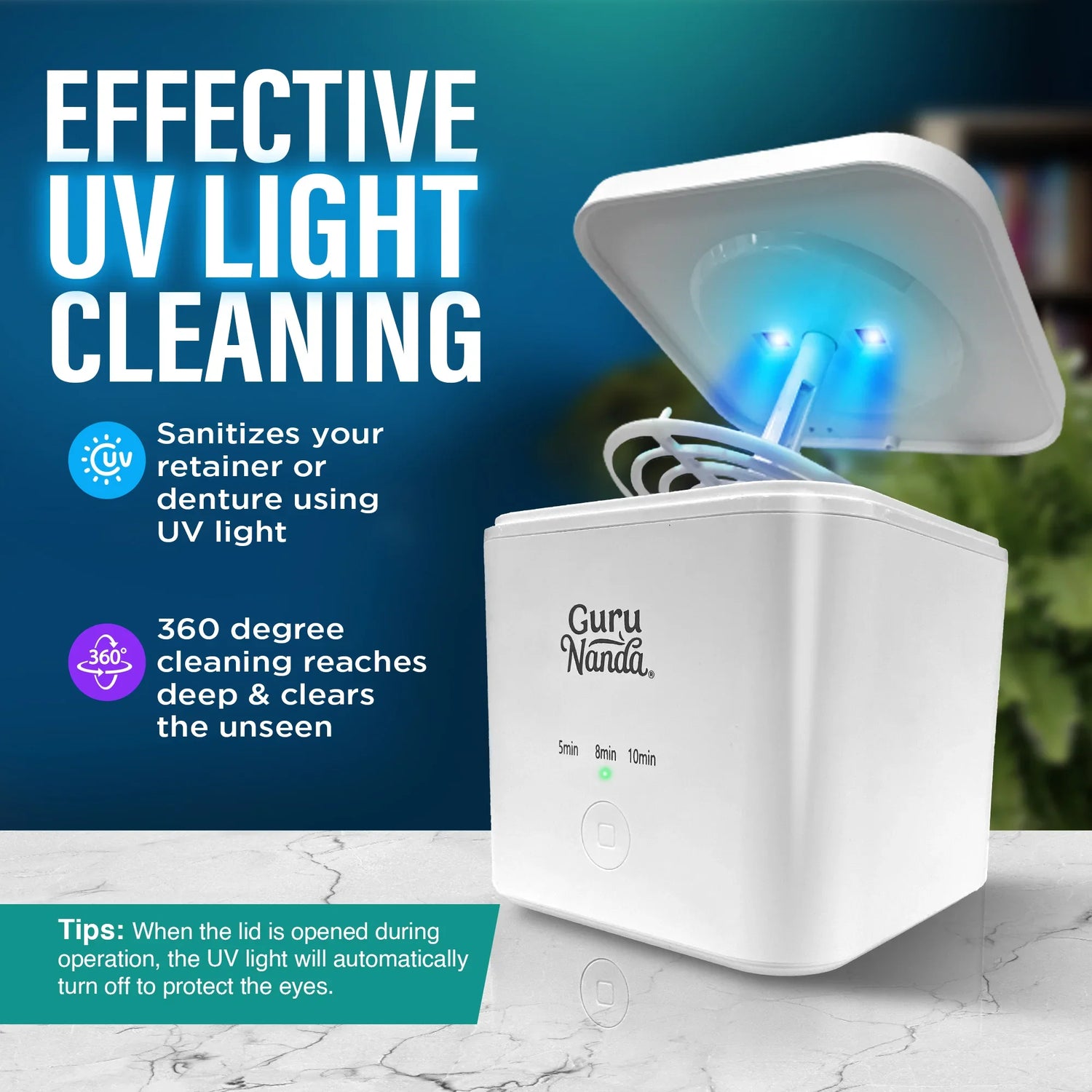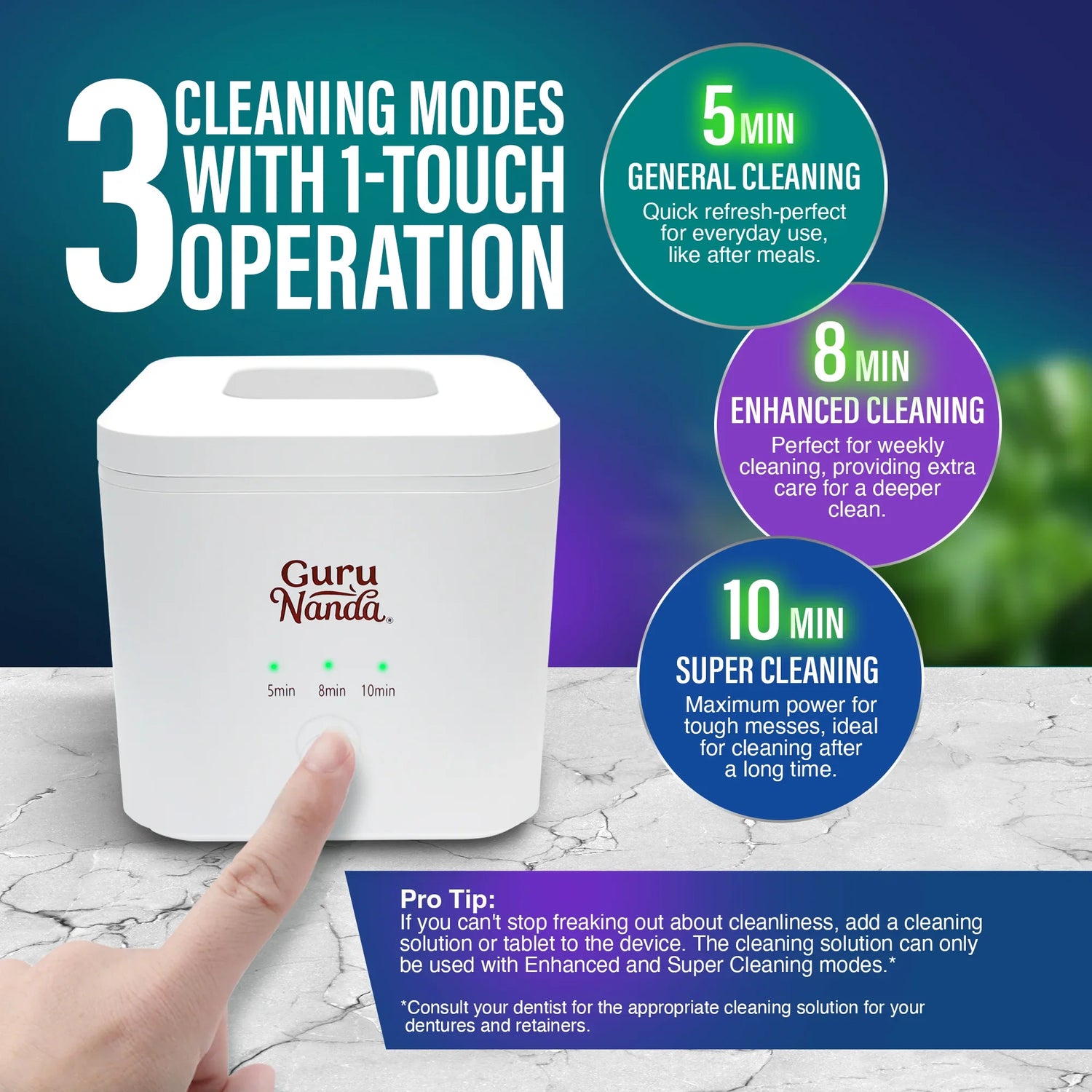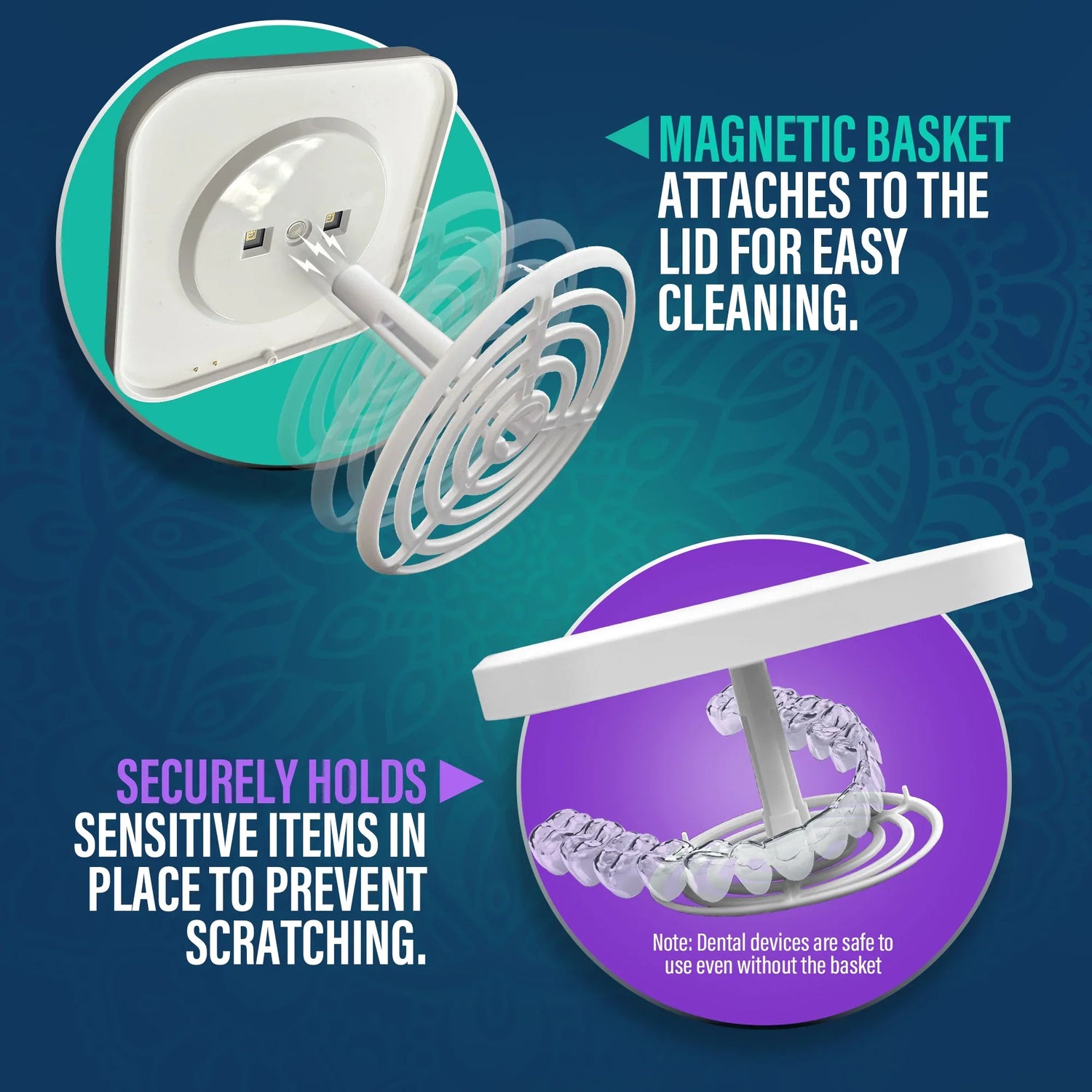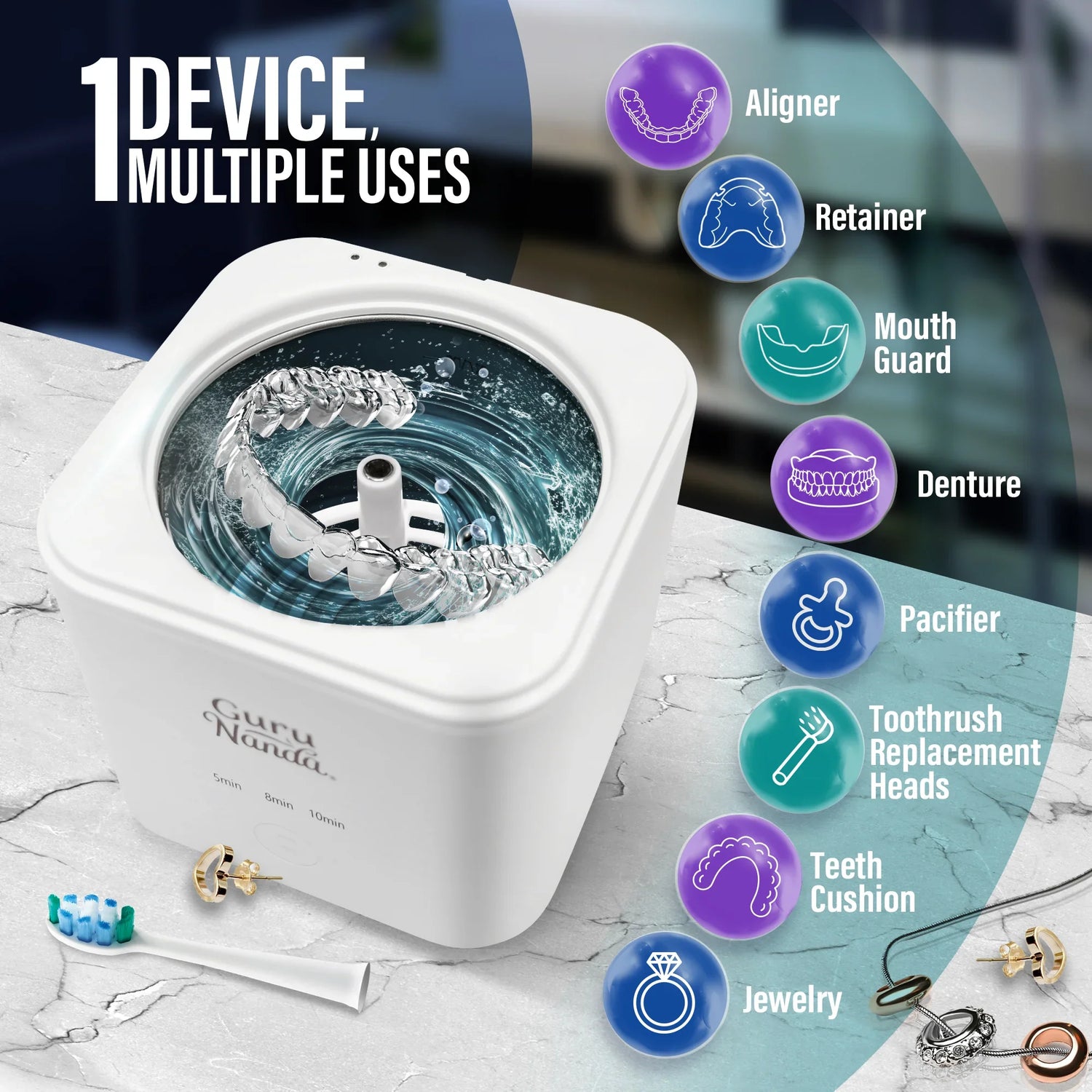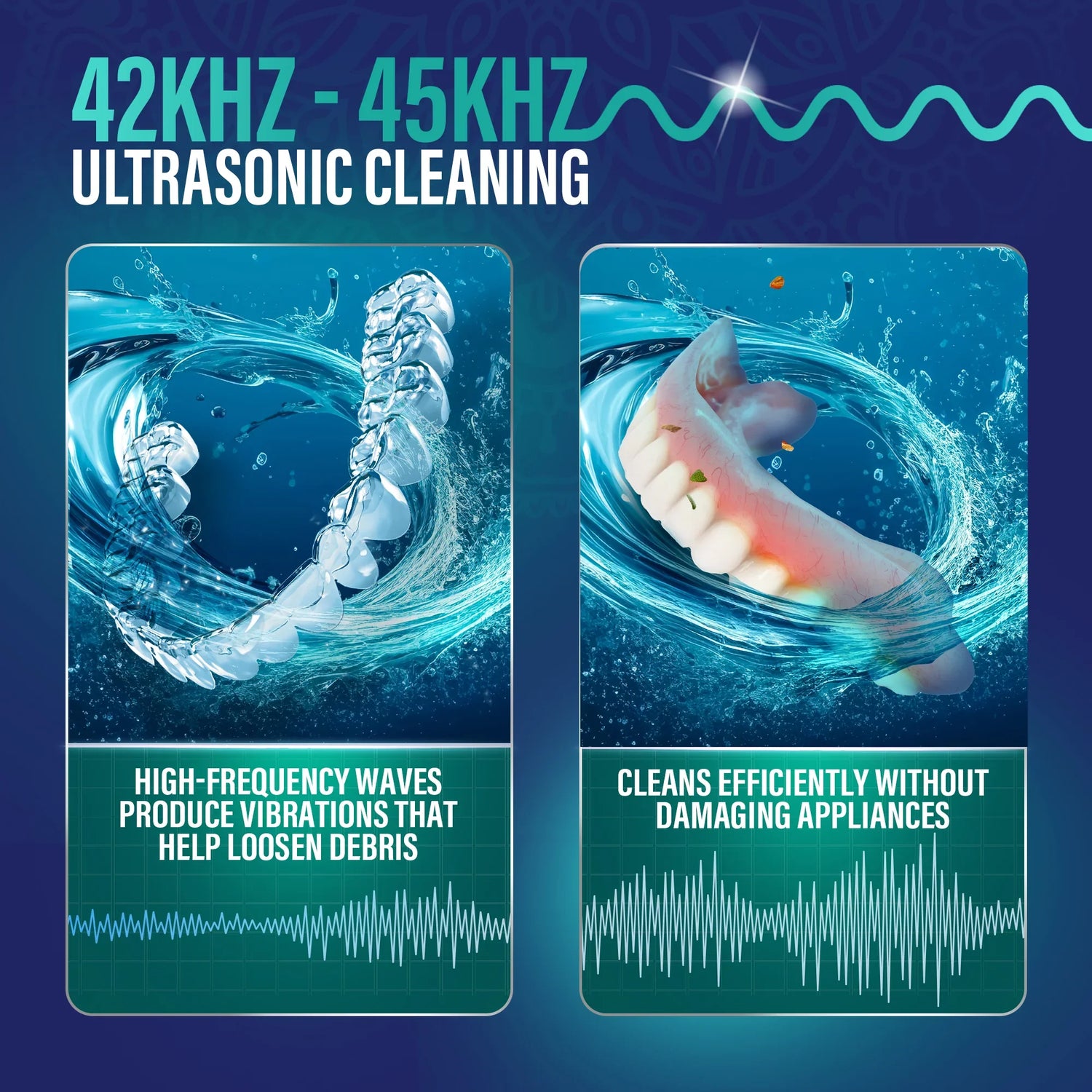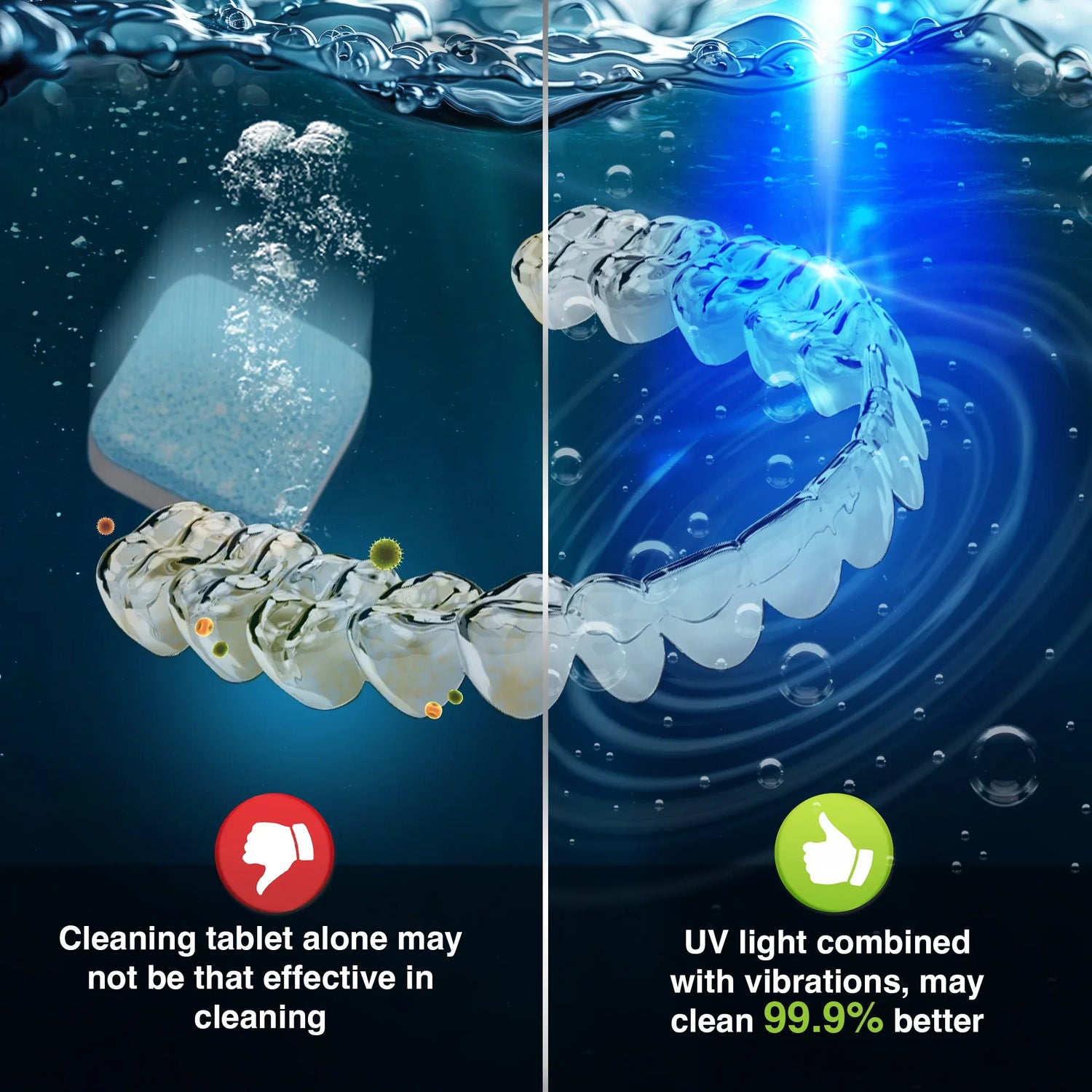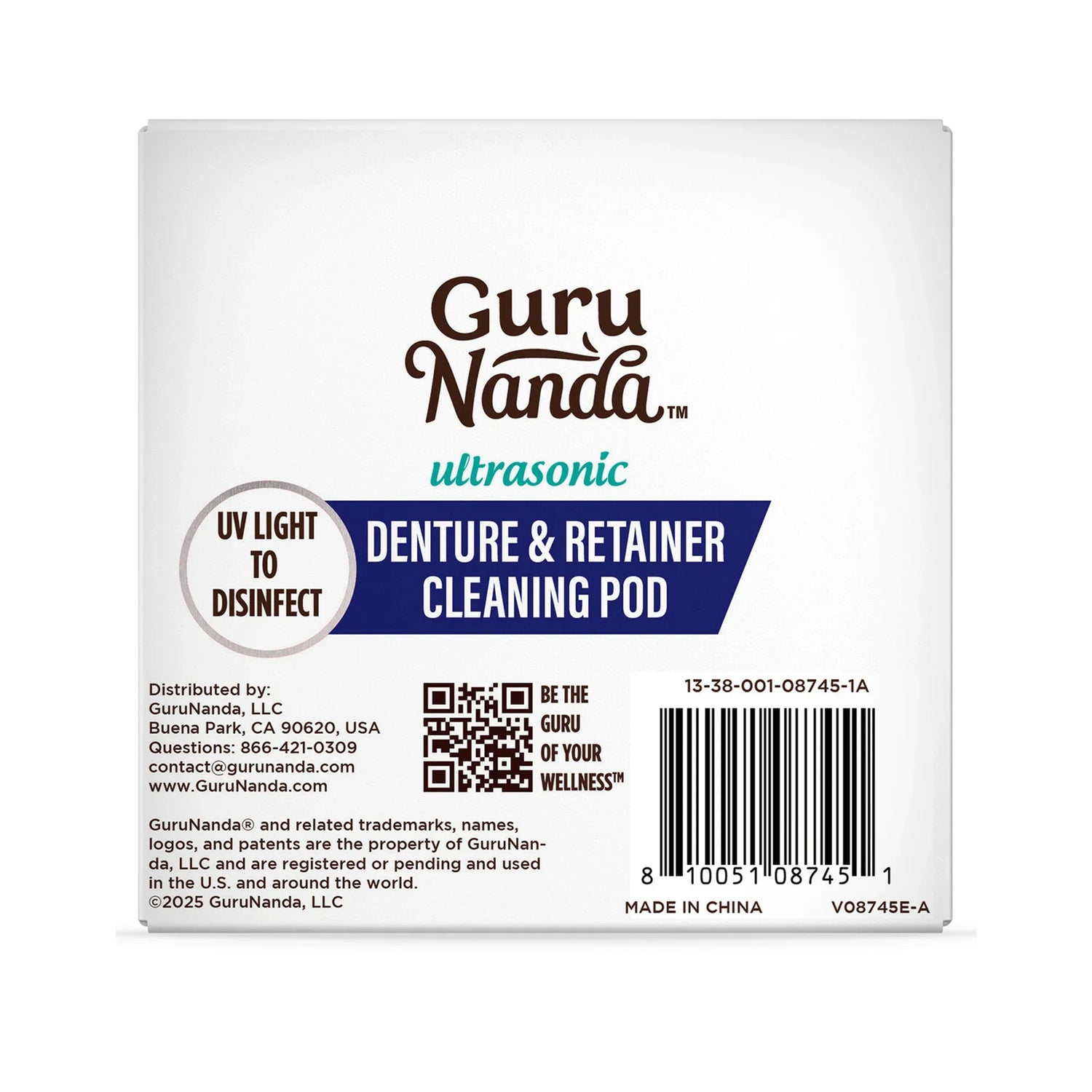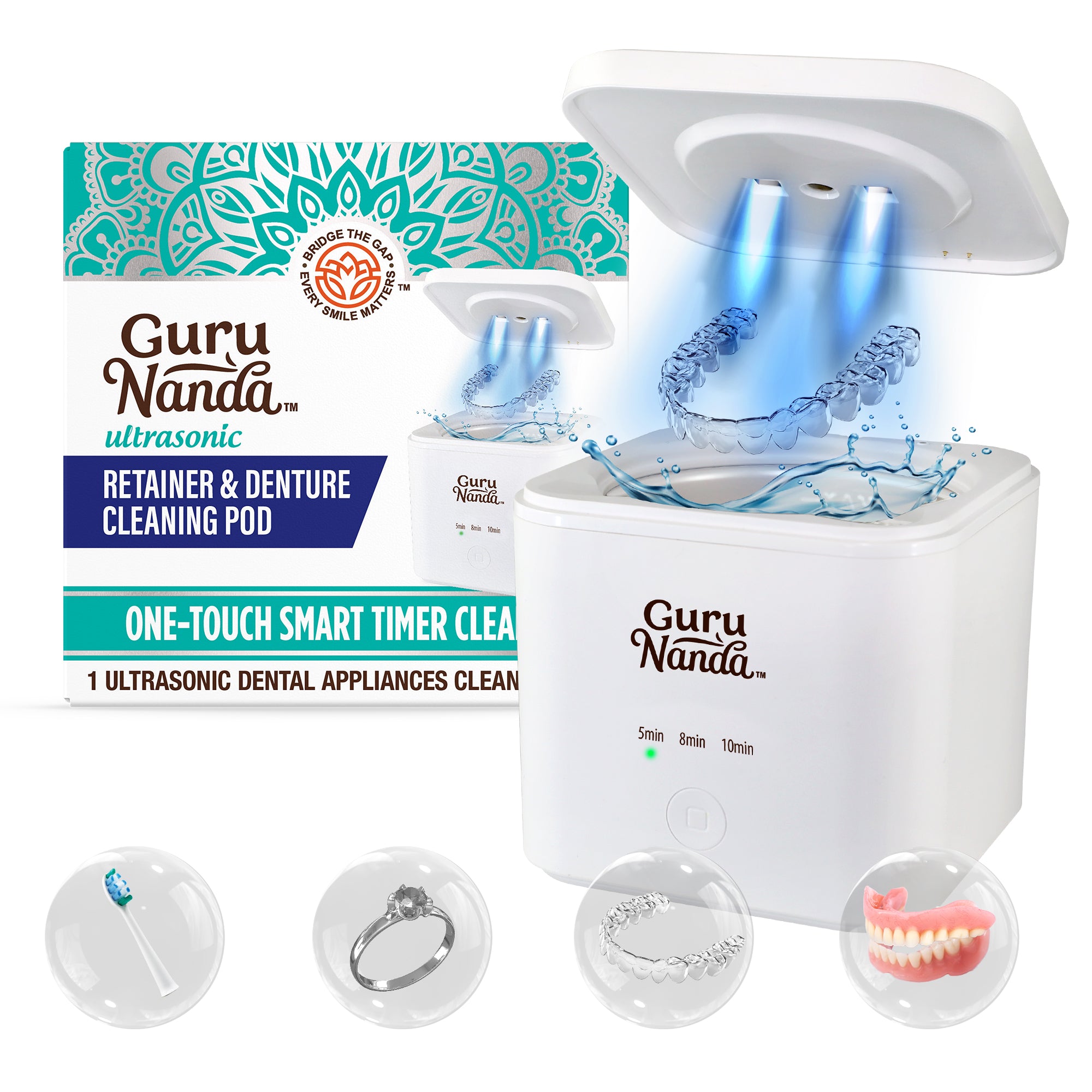
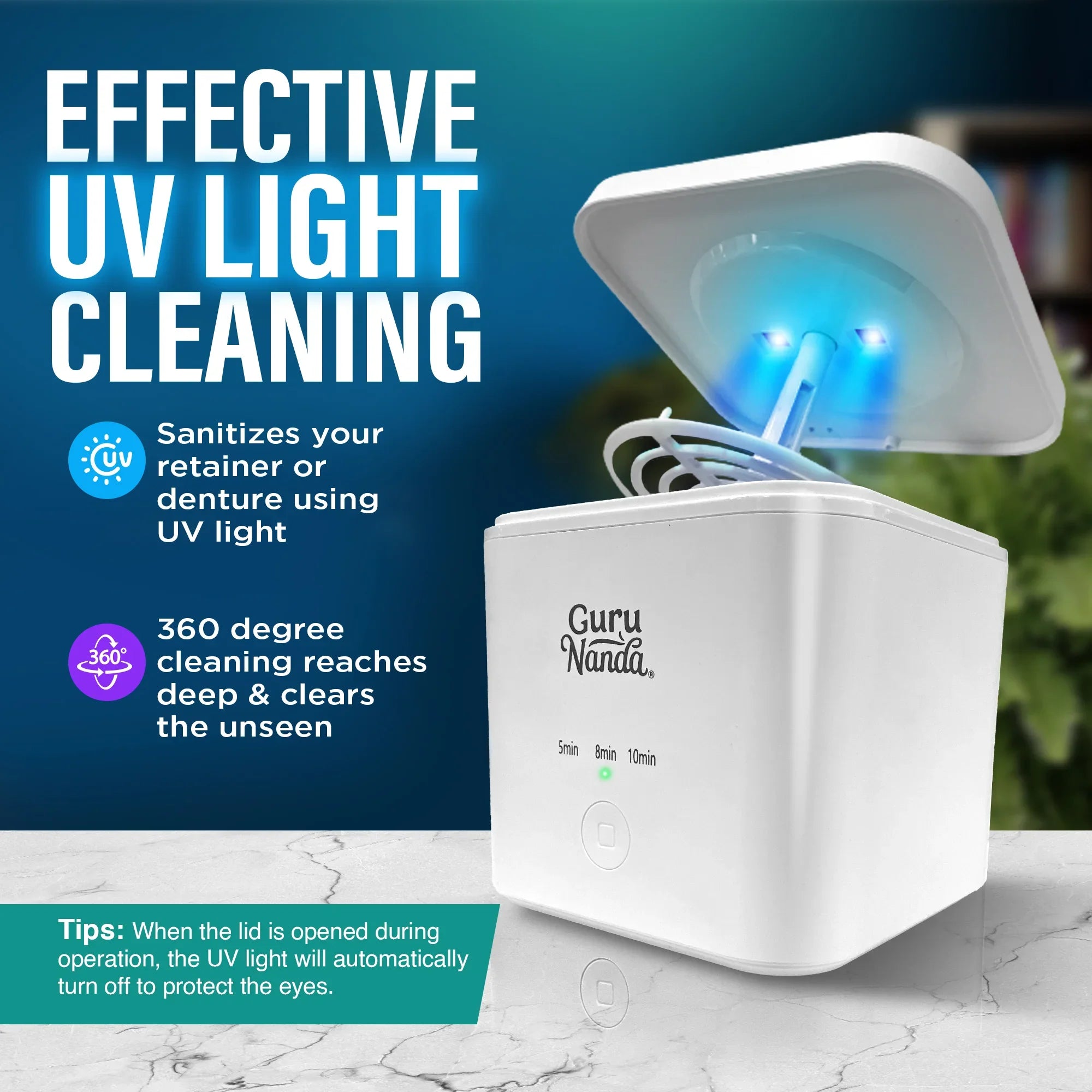
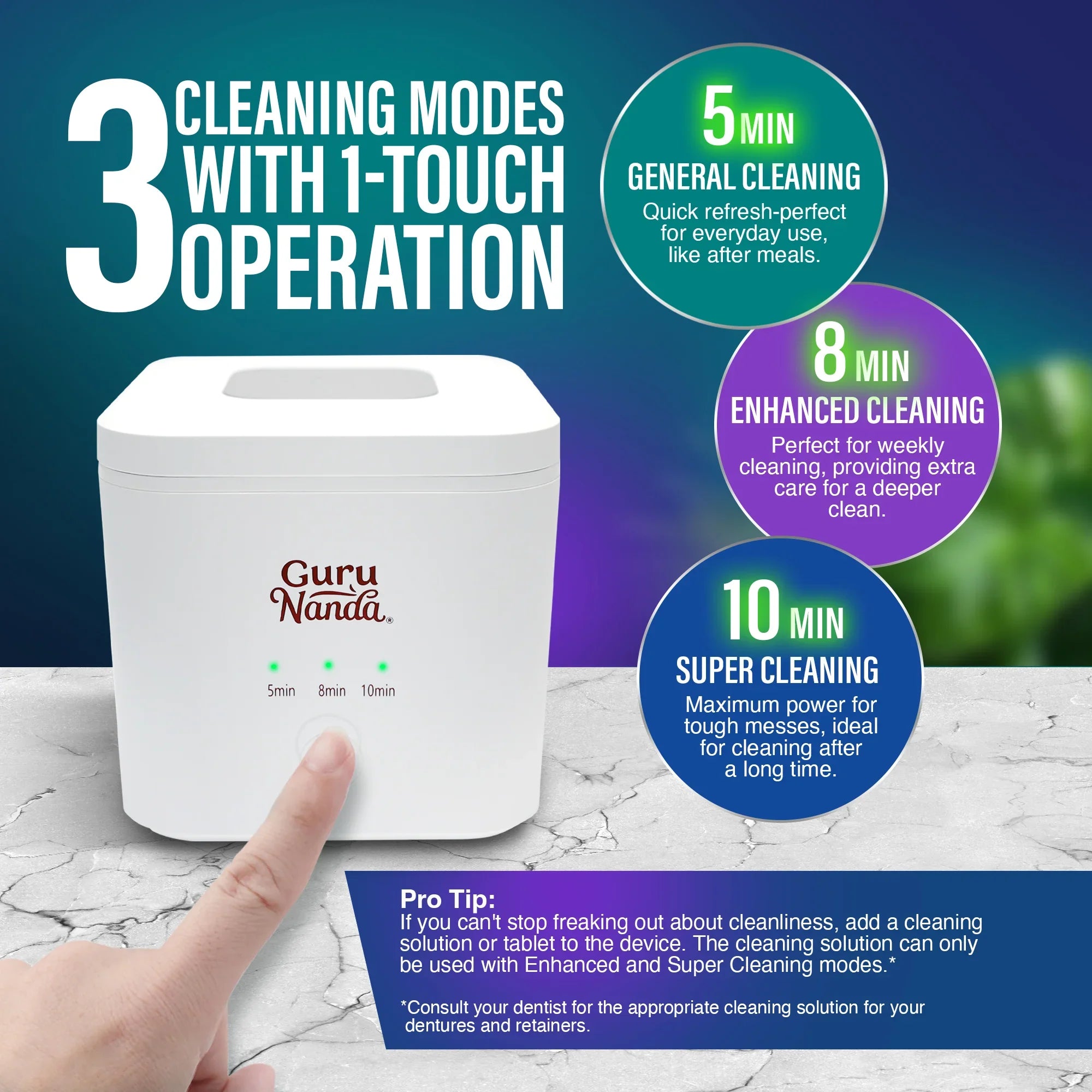
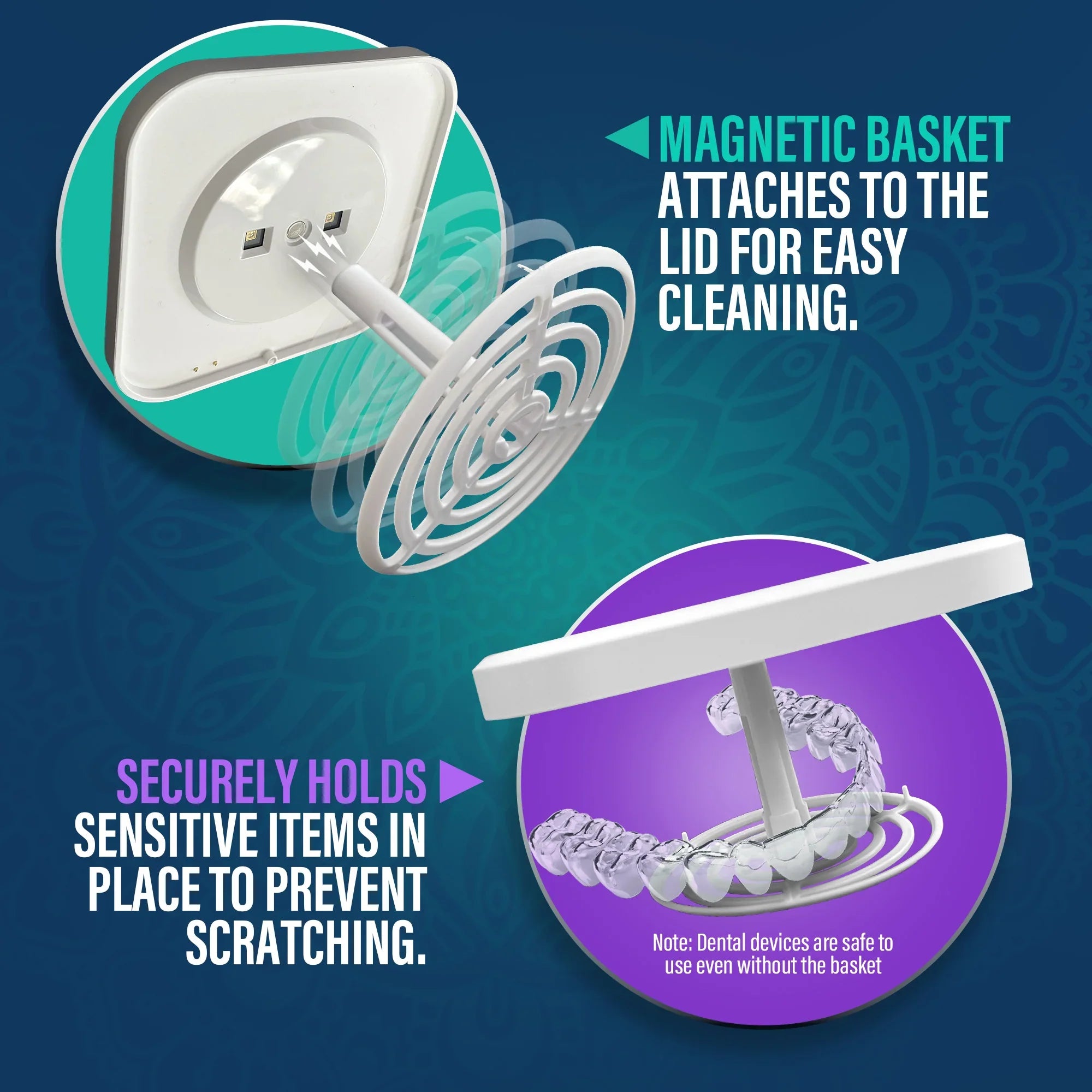
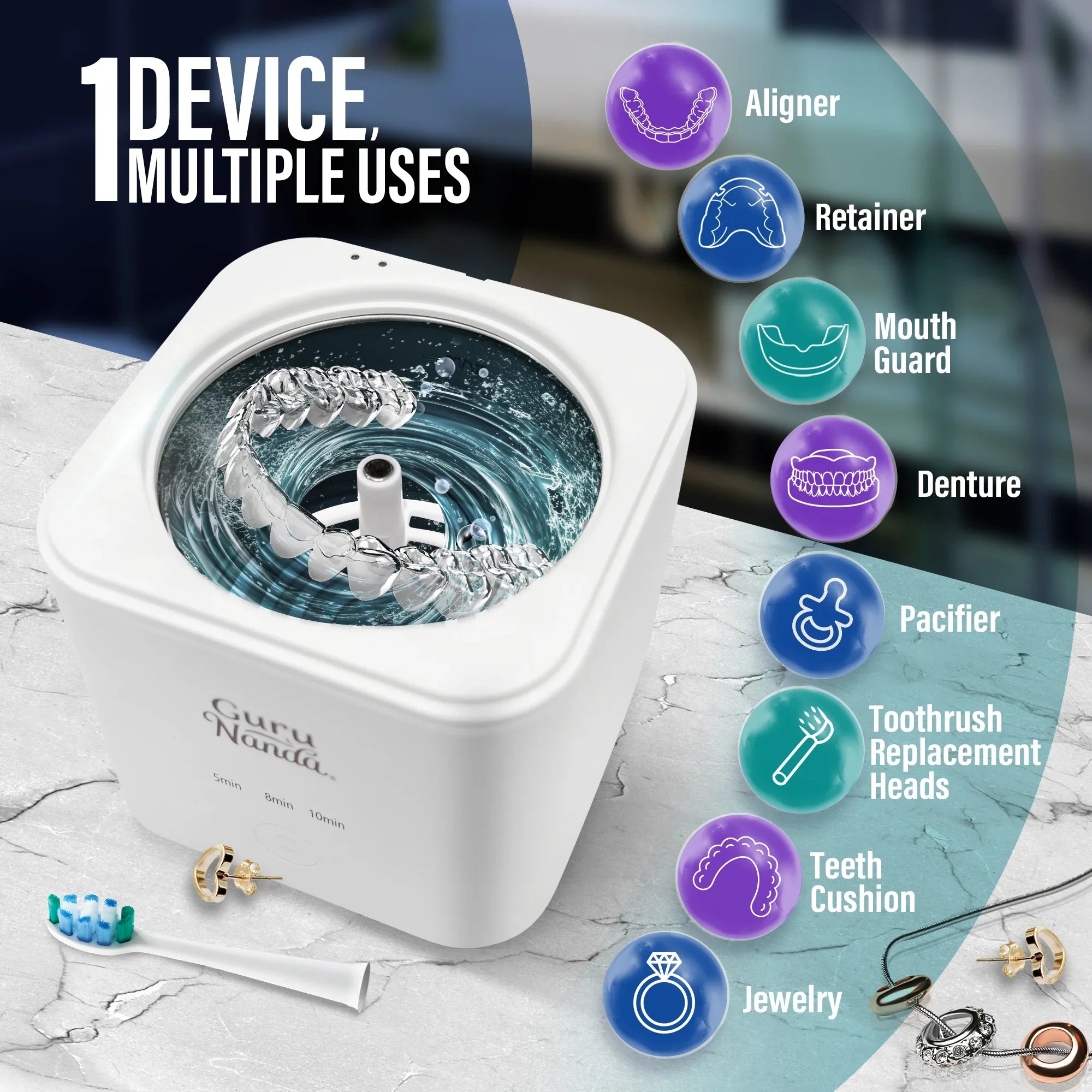
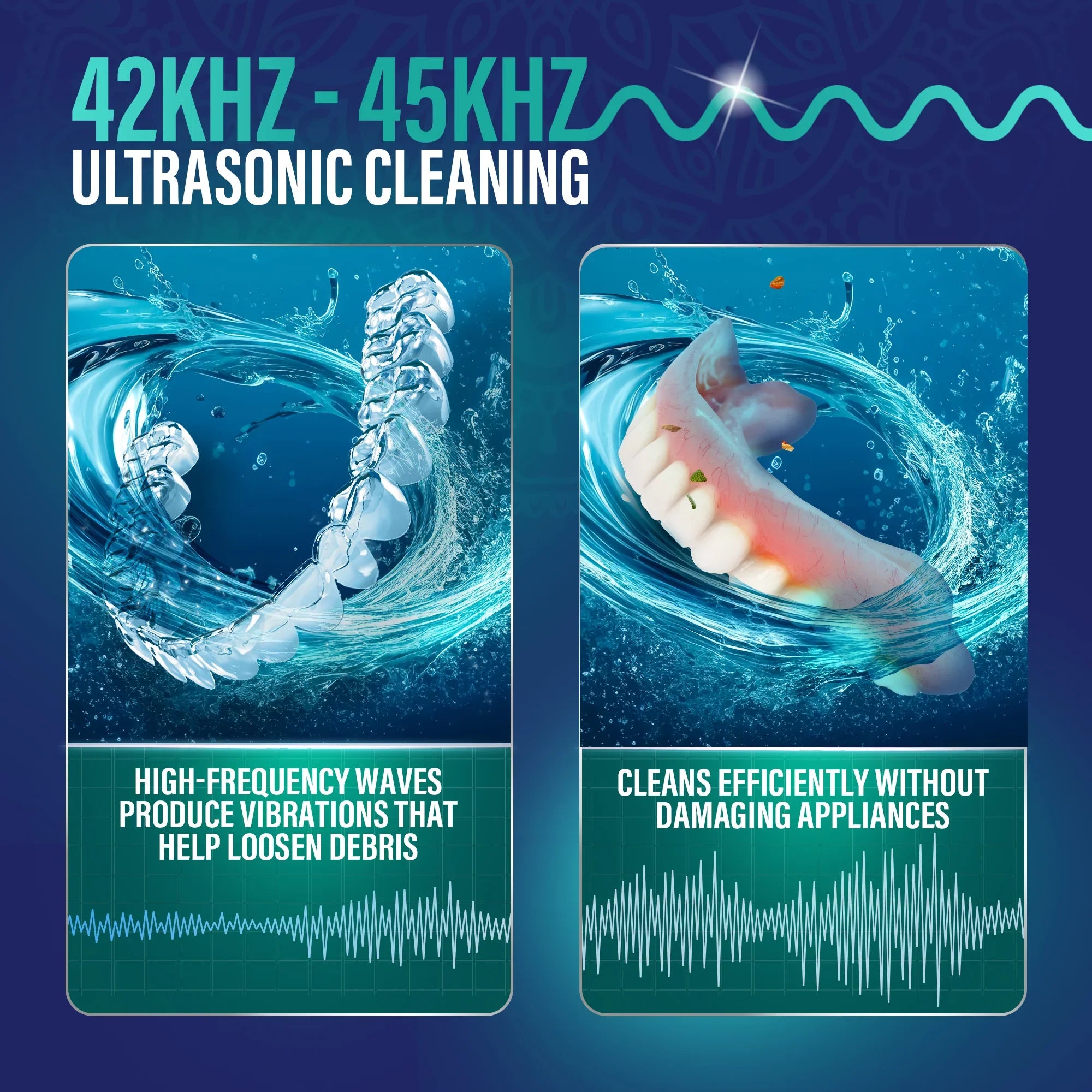
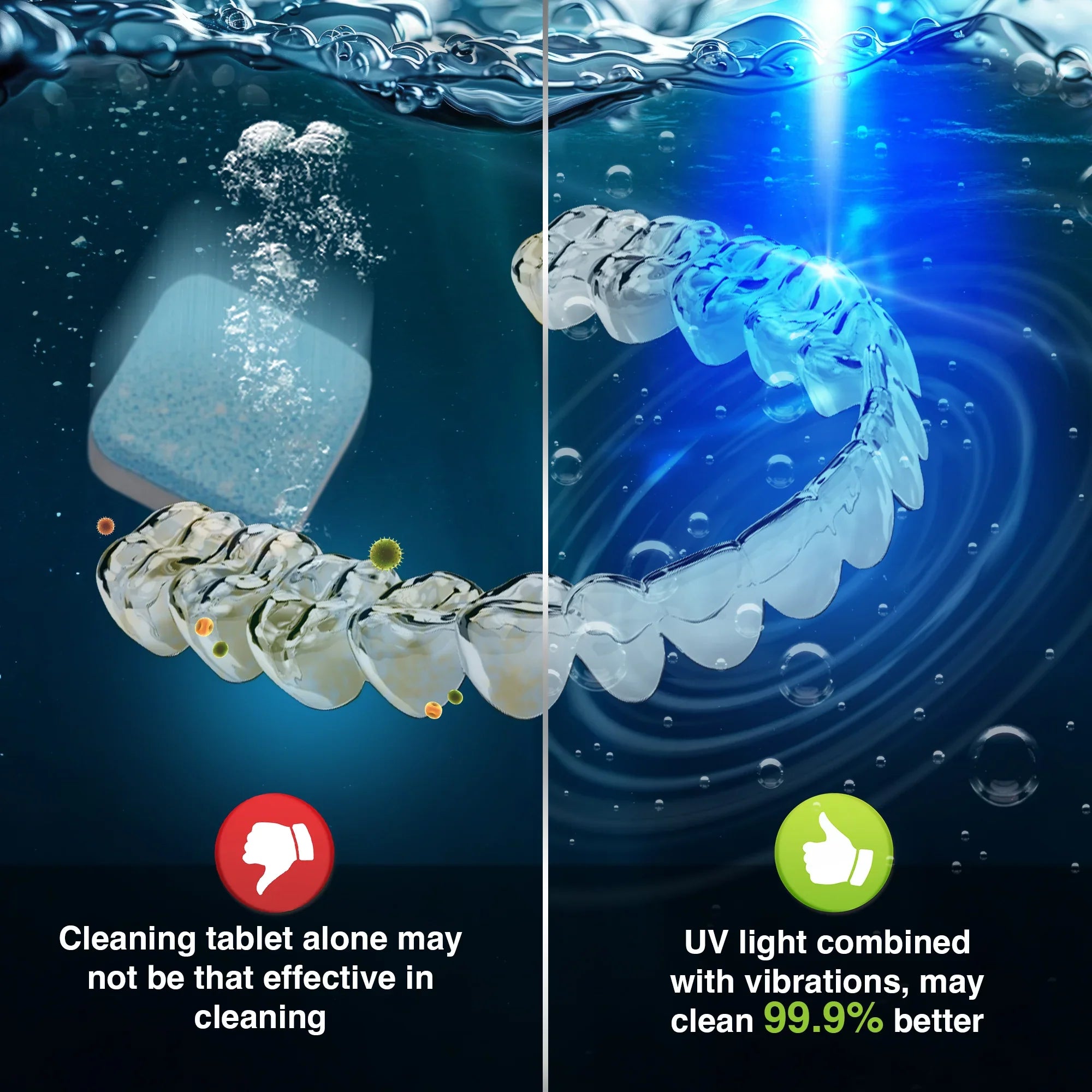
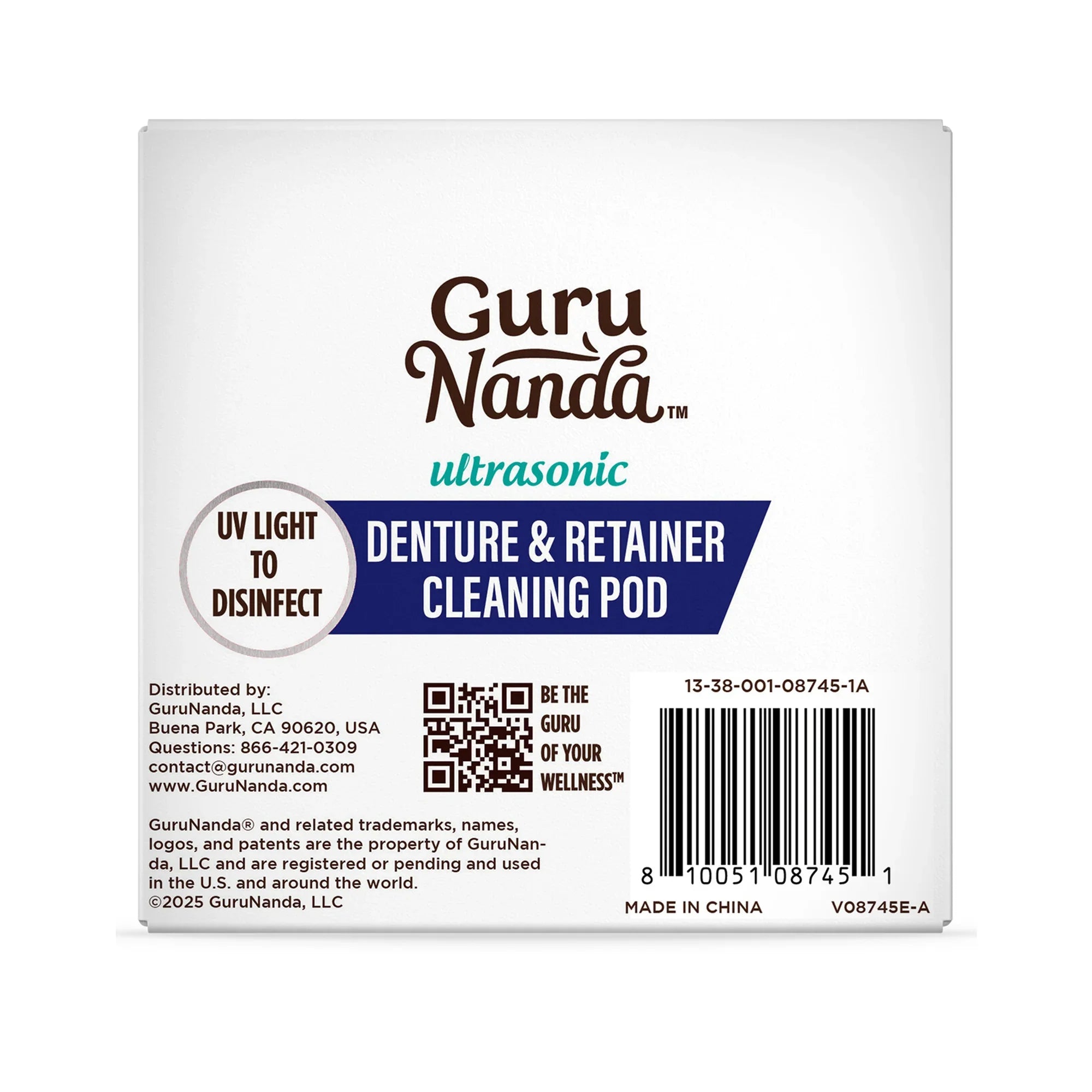

Ultrasonic Technology for a Deeper Clean
Our Retainer & Denture Cleaning Pod uses 45kHz ultrasonic waves to generate millions of microscopic bubbles that gently loosen plaque, debris and buildup, even from hard-to-reach crevices. The built-in UV light activates when the lid is closed, offering a deeper clean. This dual-cleaning action delivers a thorough, non-abrasive clean that’s safe for delicate dental appliances like retainers, dentures, aligners and more.

Smart, Simple Cleaning at the Touch of a Button
Cleaning your dental gear doesn’t need to be complicated. With one-touch operation and three timer settings (5, 8 or 10 minutes), it’s easy to get a powerful clean in minutes.



